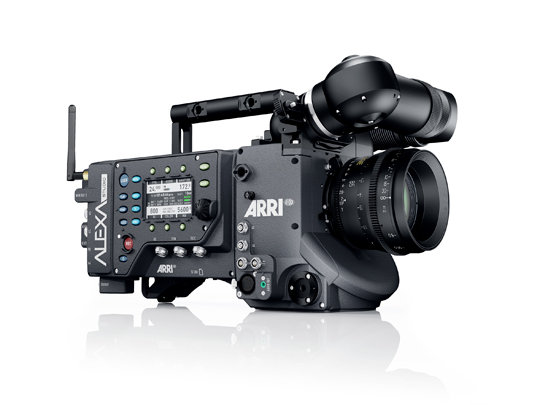[dc]T[/dc]hanks to my affiliation with IATSE Local 600, Cinematographers Guild, I had an opportunity recently to attend a class given by ARRI to learn more about their new Alexa camera series and though I have shot with one once already, I did learn some new and interesting facts about what is quickly becoming one of my favorite camera systems.
I really like the Electronic View Finder (EVF) that ARRI ships with this camera because, even though it has all the short comings of being an EVF, it is the only one I did not experience eye strain from and, as popular as on-board monitors have become, I just never liked the idea of having a tiny television attached to a camera I am trying to balance and operate. That said, coming from a film background I really do miss an optical eyepiece: I miss the sharpness of it, the true color, and I miss the way it naturally makes the camera feel like an extension of myself. So you can imagine how much I have anticipated the optical eyepiece Arri had been talking about since they first announced Alexa, but what I wasn’t expecting was that the addition of said eyepiece would solve one of the most dreaded problems of digital acquisition: image skew, or “jelly vision”. Should I give you a moment to let that sink in? I found it difficult to fathom myself, so during a break I asked Stephan Ukas-Bradley, Product Manager of Digital Production for ARRI to verify it for me, and it breaks down like this:
 In order to utilize an optical eyepiece the Alexa Studio now has a mechanical rotating shutter mirror just like every motion picture film camera uses. Essentially this gives the Alexa Studio a Global Shutter instead of a Rolling Shutter. Simply put, the sensor is exposed completely, all at one time, however “it is still recording the data from top left, down to bottom right, but it is doing it when the shutter is closed” Mr. Ukas-Bradley said. In other words, exposing globally, but writing as if it were a rolling shutter. According to Ukas-Bradley this method virtually eliminates all of the anomalies of a CMOS sensor.
In order to utilize an optical eyepiece the Alexa Studio now has a mechanical rotating shutter mirror just like every motion picture film camera uses. Essentially this gives the Alexa Studio a Global Shutter instead of a Rolling Shutter. Simply put, the sensor is exposed completely, all at one time, however “it is still recording the data from top left, down to bottom right, but it is doing it when the shutter is closed” Mr. Ukas-Bradley said. In other words, exposing globally, but writing as if it were a rolling shutter. According to Ukas-Bradley this method virtually eliminates all of the anomalies of a CMOS sensor.The mechanical shutter is not adjustable and is locked at 180°, but if you need more or less shutter, it swings out of the way and reverts back to the electronic shutter. You can also remove the Optical eyepiece and replace it with the EVF.
Anticipated upgrades to the system will be 120 fps shooting at 1080p and electronic anamorphic de-squeeze in the EVF and record out. And although these are “licensed” upgrades, meaning you have to pay for them per camera, upgrades are easily accomplished using the additional SD card slot. You can also generate your own custom LUTs and frame lines and upload them to the camera using the same SD card slot.
[dc]A[/dc]nother cool feature of this camera is that it has it’s own ip address which means it can communicate over the internet. Now imagine you are on location somewhere and the camera starts to experience problems you just can’t solve (I know this never happens, but bear with me…), you just jack your camera into the ‘net and the guys with the really big brains over in Munich can troubleshoot it from half way around the globe. That’s what I call using your super power for good, and not evil.
Most of what makes this camera great has been published already, like it’s dual gain architecture giving it 14 stops of latitude, it’s “future-proof”design and easy-to-navigate menu structure, so I just wanted to point out a couple of things ARRI doesn’t necessarily put in their press releases that I found important. To learn more go to the ARRI website.
For more insight into Rolling vs Global Shutter, Abel Cine published a good article, and DVXUser published a good one about CMOS Sensor artifacts.


I’ve just about had it with the CMOS rolling shutter issue. I can’t understand why we can’t just increase the clock speed of the CMOS shutter chips (overclock them) to eliminate or reduce jellyvision problem.
I’d like to know what Mr. Ukas-Bradley means by “it is still recording the data from top left, down to bottom right, but it is doing it when the shutter is closed”–this statement is very suspect… and it “virtually elimiates” rolling shutter effects? Again, suspect. In my mind that means, once the mirror has rotated out of the way, and the sensor is exposed the exposure is taken, but ultimately it is still a cmos sensor and I’d like to see it shooting a spinning fan blade..
Test?